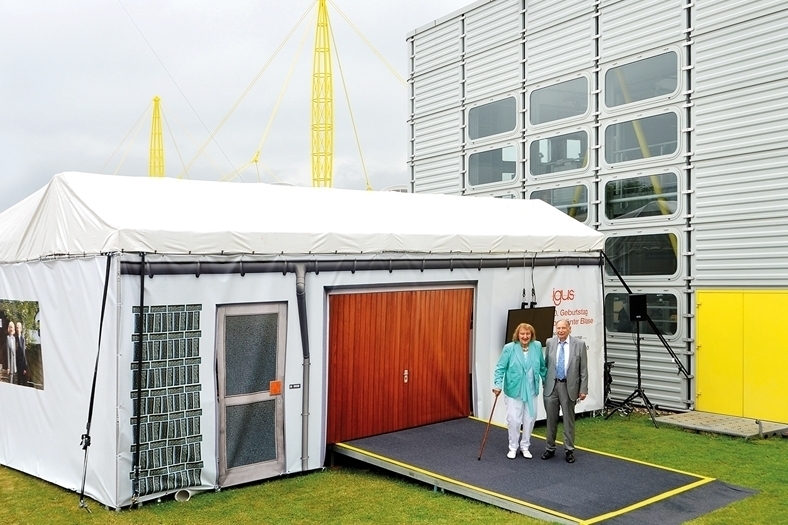Electrification of CAM machines to modify industries with efficient solutions
By Staff Report October 5, 2024 11:48 am IST
The rise of electrification in electric construction, agriculture, and mining (CAM) machines is expected to lead to local air quality improvements, lowered greenhouse gas emissions, safer work environments, and fewer pollutants.
The battery market for electric construction, agriculture, and mining (CAM) machines is expected to reach US$8 billion by 2034. Electric CAM machines promise health, environmental, and productivity benefits while also acting as long-term financial investments for companies. These machines come in a number of shapes, sizes, and weights and require a wide variety of batteries to suit their many functions. IDTechEx’s report, “Battery Markets in Construction, Agriculture & Mining Machines 2024-2034,” explores battery chemistries’ options for different machine requirements.
Rise of electrification
Local air quality improvements, lowered greenhouse gas emissions, safer work environments, and fewer pollutants are all advantages of CAM machine electrification. Despite these machines carrying high initial costs, the reduced diesel and maintenance costs over time will make them a good investment within these industries. Additionally, operators can expect further benefits, such as faster system responses, improved control, and easier operation.
Excavators, loaders, and mini excavators make up around three-quarters of the construction machine market. However, the popularity and size of large excavators (>6 tonne) specifically mean they are huge emitters of greenhouse gases. IDTechEx reports that almost half of the total emissions from construction machines come from these alone. While mini excavators may be easier to electrify, making the larger ones electric still stands as a huge goal in the hope of greatly reducing emissions. Within the mining sector, the main vehicles set for electrification include dump trucks, haul trucks, and mining light vehicles, while tractors see the most electrification within the agriculture sector.
Before transitioning to electric vehicles, factors such as charging infrastructure installation on work sites and the ability of machines to work a full day on one charge must be considered. Limited government push and lack of subsidies may make initial costs too high.
Battery types and requirements for CAM machines
The power demands of machines vary, making batteries a non-one-size-fits-all solution. CAM machines require faster charging than everyday electric cars to minimize downtime and ensure timely work completion. Cells that can be charged quickly might ordinarily have reduced energy density, but with technologies including high silicon content anodes and solid-state electrolytes, higher energy density could be available alongside faster charging capabilities.IDTechEx uses data from over 200 electric CAM machines across various markets to suggest the most suitable battery types based on their energy consumption per tonne per hour. LFP and NMC chemicals are the main battery types currently in use, as they have been popular within the automotive industry. IDTechEx’s latest report on batteries for CAM machines reveals that tractors are the most energy-intensive machines, consuming 50% more energy per hour than other CAM machines, necessitating larger batteries.
New battery chemicals like lithium titanate may be beneficial for preventing fast charging from causing faster wear or decreased longevity. The introduction of new anode materials, such as LTO, could see an electric machine lasting more than 10,000 cycles on one battery without replacement. By contrast, leading NMC and LFP technologies offer up to ~5,000 cycles before reaching their end of life. Having a 10,000+ cycle battery would mean huge cost and convenience advantages for companies employing them.
Solid-state batteries for increased safety
Solid-state batteries could potentially improve cell safety, a crucial aspect for electric CAM machines, making them a promising future option. This could be a crucial development for machines working underground or indoors, such as underground loaders or mini excavators. Solid-state batteries could also provide an increased energy density so that machines can more comfortably fulfil their duty cycle demands. This battery chemistry, however, comes with challenges during the manufacturing process, such as ensuring high-quality electrolytes are thin enough, as well as maintaining a good connection between electrolytes and electrodes.
IDTechEx’s report covers 10 different future battery options for CAM machines, as well as exploring which chemistries are available in different regions. While Europe and North America most commonly use NMC, LFP is more common in China, with Europe and China predicted to see LTO batteries employed first. With the wide variety of weights, sizes, and use cases of CAM machines, LFP and NMC might no longer be the best options, with emerging technologies, including silicon anode, solid-state, and sodium-ion, predicted to be amongst the best. The report provides comprehensive information on product offerings from over 40 distinct pack manufacturers.
Cookie Consent
We use cookies to personalize your experience. By continuing to visit this website you agree to our Terms & Conditions, Privacy Policy and Cookie Policy.














